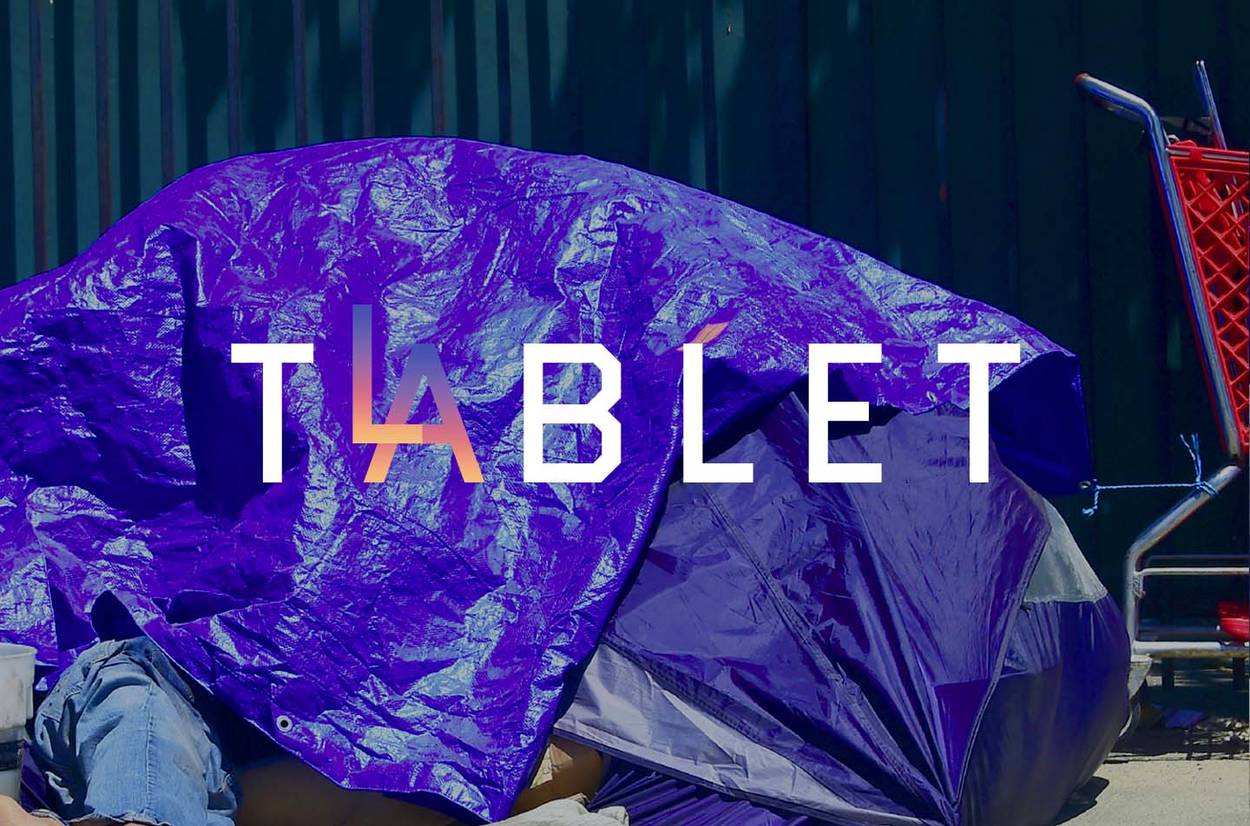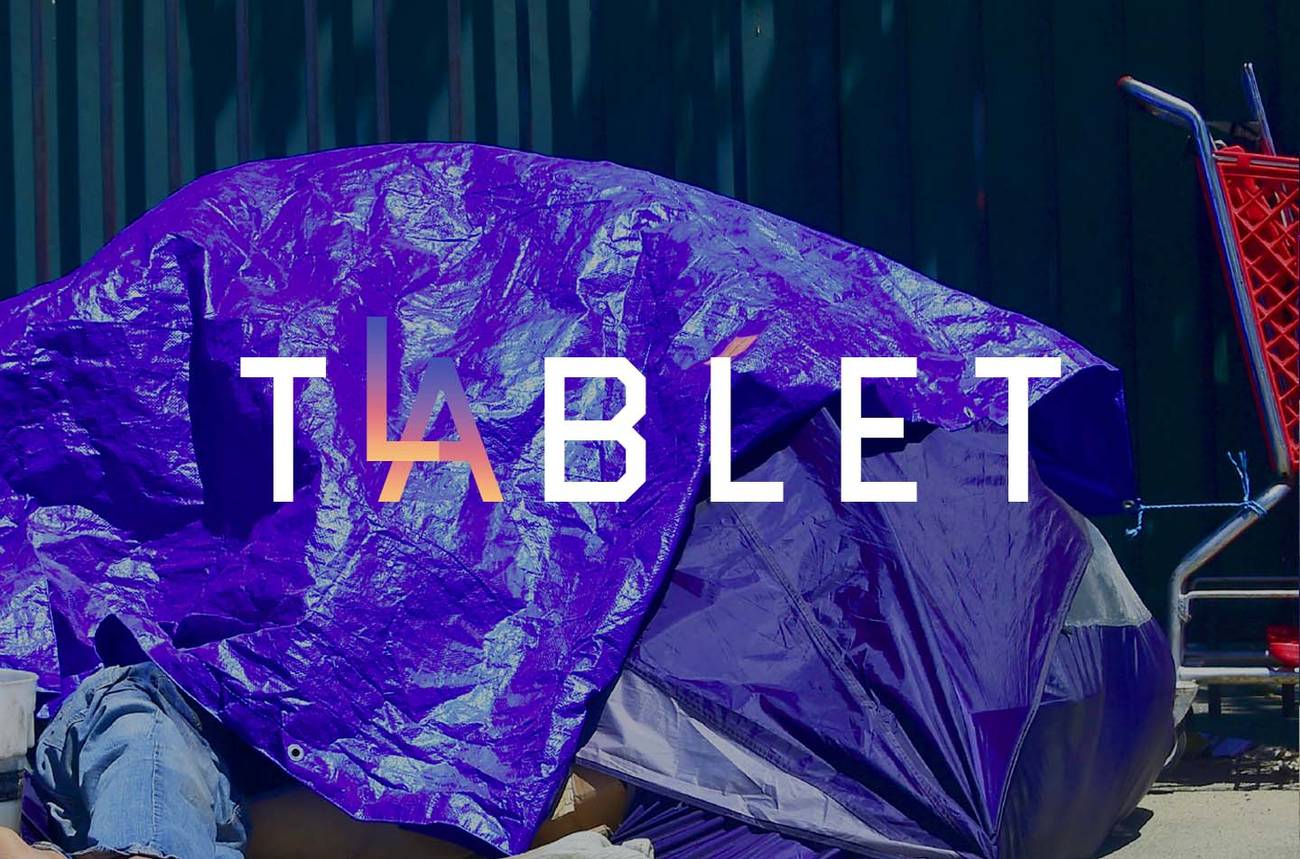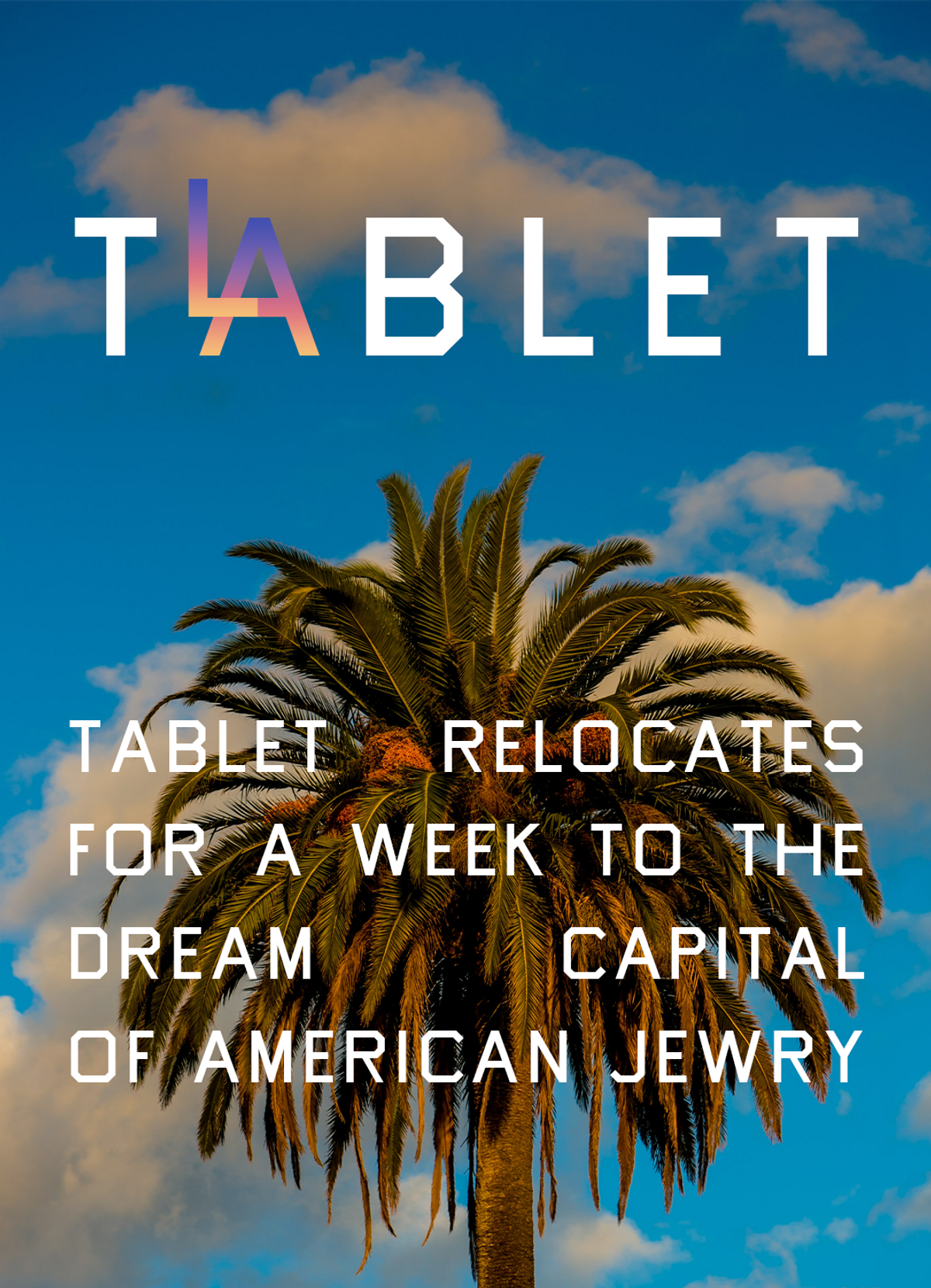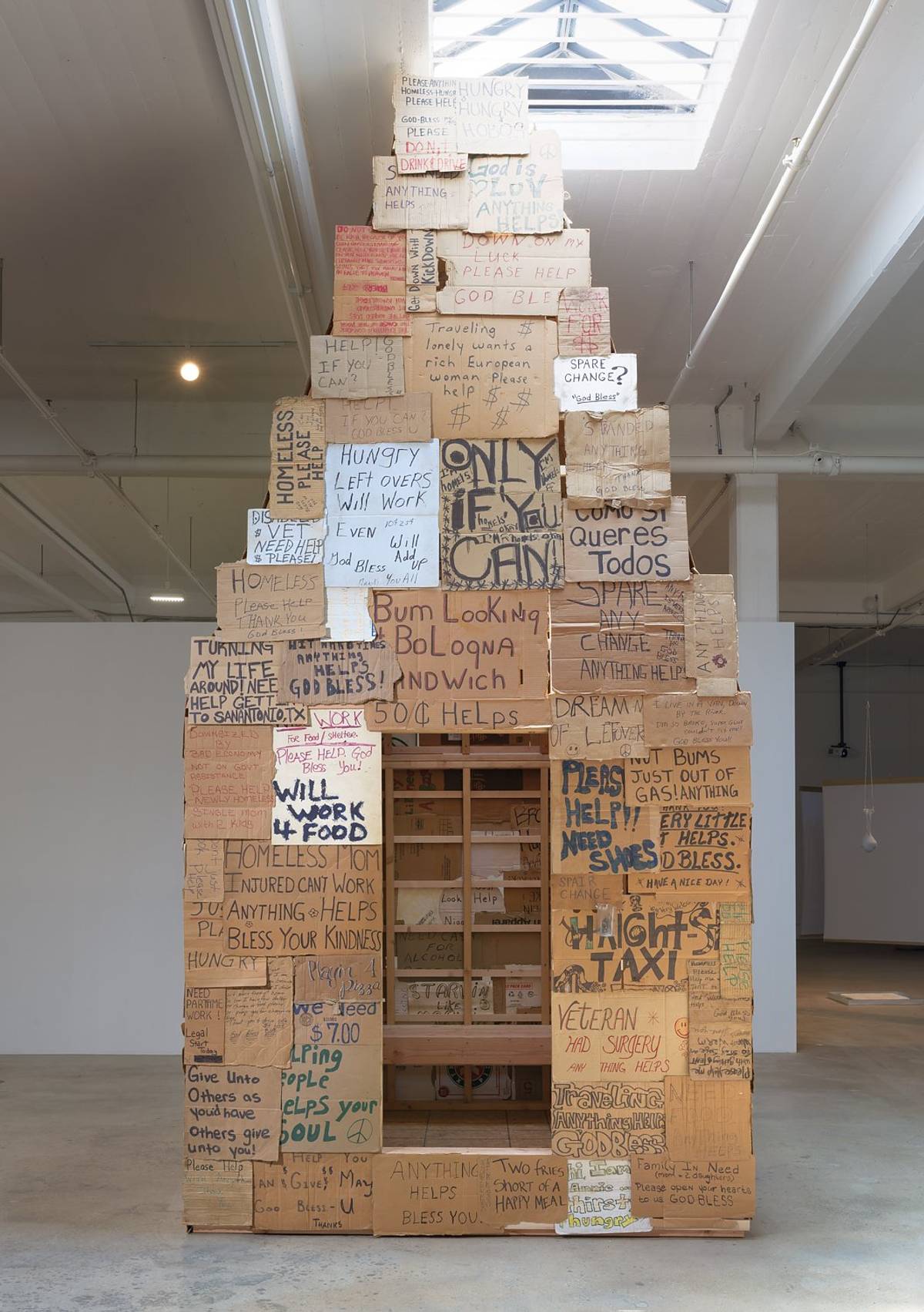A Sukkah in February, and the Revelations Within
A Hollywood art gallery explores pilgrimage, wandering, shelter, and other themes of an LA Sukkot




LA is both showy and mysterious, a place where superficiality and concealment feed off of one another. A 10-minute walk south of Darth Vader’s cement autograph in front of the TCL (formerly Grauman’s) Chinese Theatre—assuming you’re daft enough to walk anywhere in LA—puts you in the middle of an arts district hidden between gas stations and storage facilities. “That’s LA really,” says Linnéa Spransy, director of Bridge Projects. “Things from the street level don’t display themselves as what they are.” The difference between the city’s gated studio lots and cutting-edge art galleries is that you can walk right into Bridge Projects’ 7,000-foot warehouselike space on Santa Monica Boulevard, assuming you know it’s there.
Bridge Projects “explores art history, spirituality, and religious traditions,” says Spransy. The gallery opened in October of 2019, its founders having perceived that Hollywood was never so godless as it seemed. “There’s a history in LA generally of spirituality and religious experience being kind of enterprising,” says Spransy—true enough for a city that’s home to thriving megashuls, the Scientology Celebrity Centre, and an astounding density of occultist bookshops. In Bridge Projects’ next show, which opens in early April, 34 artists will take on the broad and terrifying theme of the afterlife; their last program was about the artistic legacy of the Black Pentecostal church.

The theme of the gallery’s current exhibition, improbably enough, is Sukkot. Titled, “We are all guests here,” it opened around the same time as the holiday this past autumn. Seven artists, all of whom have a Jewish background or identity, were invited to create works dealing with Sukkot’s various themes: pilgrimage, home, wandering, shelter, safety, or, in the case of SaraNoa Mark’s glass and ceramic water clocks, the precariousness of having to depend on rain for survival. The building of sukkahs, as Spransy notes, is a communitywide annual art project. “In a way you’re making a sculpture to live in,” she explained. “It’s not farmed out to the priestly class. You’re building it yourself, which is what art is. It’s a really exuberant transformation of space.”
In a couple of cases, the artists transformed the meaning of the annual festival in ways that are liable to pop back into my consciousness when the sukkahs go up again this fall. In a work titled Sukkah of the Signs, the husband-and-wife team that works under the name Rael San Fratello paid homeless people in and around San Francisco for their handwritten appeals for help. The patchwork of cardboard rectangles forms a towering four-sided structure reaching toward the gallery’s only skylight. “We tried to make this one somewhat kosher,” said Spransy.
Some of the homeless signs that make up the walls of the sukkah contain pithy appeals to the conscience: “Dare to share,” reads one. Others try at dark humor: “Cash needed for alcohol research,” says another, with the words next to a drawing of a lab beaker. A few are snapshots of actual human beings in a heartbreaking state of flux: “Turning my life around! Need help getting to San Antonio, Texas.” In its totality, the sukkah is a chronicle of an omnipresent moral scandal and its human costs, the temporary structure serving as a spiritual and aesthetic vehicle for questions that should haunt and shame residents of the many American cities with growing indigent populations—including Los Angeles, where sidewalk tents have become an unremarkable aspect of life across seemingly the entire metro area.

By contrast, the only overt reference to Sukkot in Adam W. McKinney’s cross-disciplinary Shelter in Place are the tree branches lining the four walls of the installation, a reference to the roofing of the sukkah. McKinney, who is both Black and Jewish, posed for photographs at sites associated with the 1921 lynching of Fred Rouse in McKinney’s native Fort Worth, Texas. Using an augmented reality smartphone app, a visitor can make McKinney spring to life. The artist, representing the murdered Rouse, launches into a wrenching series of dances, dropping to the ground in front of a police station, spasming in an overgrown cemetery as if his soul is departing his body.
On the opposite wall, McKinney is split between twin video channels, dancing in comparative serenity, as if he’s finally approaching some conditional and uneasy peace with the story he’s tried to bring back to life. In McKinney’s interpretation, then, the sukkah represents protection from injustice, and a space for reckoning with unsettled histories. That the reckoning was happening here and now, in a half-hidden Hollywood art gallery, made the experience of McKinney’s work all the more unexpected, and overwhelming.
Armin Rosen is a staff writer for Tablet Magazine.